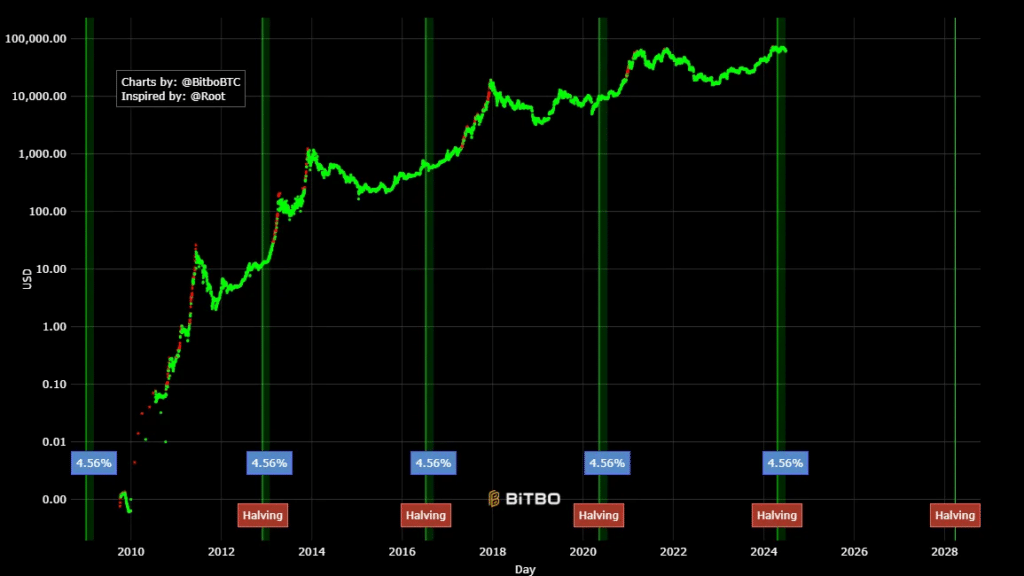Technological advancement coupled with Artificial intelligence (AI) has taken over industries in the 21st century. For example, non-Fungible Tokens (NFTs) have exploded in popularity in recent years as a means of buying, selling, and trading unique digital assets such as artwork, music, and videos. As NFTs continue to gain in popularity, the incorporation of Artificial Intelligence is reshaping the NFT industry.
Artificial Intelligence technology enables artists, collectors, and investors to generate, authenticate, and monetize non-fungible tokens in novel ways. The process of creating and validating NFTs becomes more rapid, efficient, and secure with Artificial Intelligence.
AI takes over the crypto industry
In recent years, the cryptocurrency industry has experienced explosive growth, with an increasing number of investors and traders entering the market. Integration of Artificial Intelligence technology, which has fundamentally altered how people trade and invest in cryptocurrencies, has been one of the primary drivers of this growth. Artificial Intelligence has impacted the crypto industry in the following ways but not limited to:
1. Automated Trading Algorithms
Automated trading algorithms powered by artificial intelligence are revolutionizing how crypto is traded. These algorithms employ machine learning and predictive analytics to analyze vast quantities of data and identify profitable trading patterns. Automated trading bots can operate 24 hours a day, seven days a week, executing trades at the speed of light and taking advantage of real-time market fluctuations.
This eliminates the need for human traders to monitor the market and make decisions on the fly constantly. As a result, trading algorithms powered by artificial intelligence have gained popularity among both professional traders and retail investors.
2. Sentiment Analysis
Additionally, Artificial Intelligence technology is used to conduct sentiment analysis on social media and news sources. This provides valuable insights into market trends and cryptocurrency sentiment as a whole.
By analyzing social media posts and news articles, Artificial Intelligence algorithms are able to identify emerging trends and anticipate market movements. This allows traders and investors to make better decisions and capitalize on market opportunities.
3. Fraud detection
Fraudulent activities such as pump-and-dump schemes, fake ICOs, and phishing scams have long plagued the crypto industry. By analyzing data from multiple sources and identifying patterns that are indicative of fraudulent behavior, AI technology is used to detect and prevent these fraudulent activities. This ensures the integrity of the crypto market and protects investors and traders from becoming victims of scams.
An in-depth look into the future: An AI-influenced NFT market
Artificial Intelligence technology’s emergence has revolutionized many industries, including the NFT industry. Non-fungible Tokens (NFTs) are immutable and transparent digital assets that are verified on blockchain technology. As the industry evolves, the incorporation of AI technology is expected to reshape the NFT industry in several ways. They consist of, but are not limited to:
1. Improved authenticity verification
One of the most pressing issues facing the NFT industry is ensuring the authenticity of digital assets. The verification process is critical for determining the worth and legitimacy of NFTs, and AI technology can help in streamlining this process.
AI algorithms can analyze digital assets and validate their authenticity using image recognition, biometric authentication, and other techniques. This will provide buyers and sellers in the NFT market with increased security and assurance.
2. Personalized recommendations
As the NFT market continues to grow, buyers will find it increasingly difficult to navigate the vast number of available options. Recommendation engines powered by AI can assist buyers in locating NFTs that align with their preferences, interests, and past purchasing behavior.
Recommendation engines are capable of analyzing vast quantities of data to recommend customized collections and investment strategies to buyers. This will enhance not only the user experience but also engagement and sales in the NFT market.
3. Enhanced creative possibilities
AI technology can provide artists and creators in the NFT industry with new creative opportunities. Generative Adversarial Networks (GANs) and other artificial intelligence algorithms can be used to create unique and original digital artworks.
These algorithms can generate entirely new designs or new visualizations based on existing works of art. This will allow artists to explore new creative avenues and produce works of art that push the NFT industry to its limits.
4. Efficient pricing and valuation
Pricing and valuation are crucial aspects of the NFT market, and AI technology can provide more precise pricing models. Various factors, such as the artist’s reputation, the rarity of the asset, and historical sales data, can be analyzed by AI algorithms to generate accurate market valuations.
This will enable sellers to more accurately price their NFTs more and provide buyers with a clearer understanding of the asset’s value.
5. Improved marketplace efficiency
The NFT market is still in its infancy, and there is a lack of platform-wide standardization and regulation. By automating processes such as listing, verification, and transaction processing, AI technology can help to streamline the marketplace. This will reduce the time and expense associated with buying and selling NFTs and provide users with a more streamlined experience.
Foreseeable disadvantages of ‘marrying’ NFTs and AI
Merging Non-Fungible Tokens with Artificial Intelligence has the potential to revolutionize several industries, including the arts, gaming, and others. Nevertheless, as with any technology, there are foreseeable drawbacks that must be considered. Here are some potential disadvantages of blending NFTs and AI:
1. Increased inequality
NFTs and AI could exacerbate inequalities that already exist. NFTs are frequently high-priced, one-of-a-kind assets that are accessible only to those who can afford them. By incorporating AI, the value of these assets could increase, leading to a greater concentration of wealth and power in the hands of a small number of individuals or entities.
2. Environmental impacts
Environmental hazards posed by various sectors of the crypto industry have been a topic of discussion for some time. The use of Artificial Intelligence in NFTs can have a substantial impact on the environment. Artificial Intelligence requires a substantial amount of computing power, so more energy will be required to create and operate these systems.
In addition, the blockchain technology that underpins many NFTs can consume a great deal of energy, resulting in a substantial carbon footprint.
3. Loss of creative control
AI could lead to a loss of creative control for artists and designers, despite the fact that it can be used to create unique and engaging NFTs. Furthermore, if AI-generated NFTs become popular, artists may feel pressured to create “algorithm-friendly” works, sacrificing their artistic vision for the sake of sales.
4. Risk of fraud
Additionally, the use of AI in NFTs could increase the risk of fraud. As Artificial Intelligence becomes more sophisticated, it may be able to create counterfeit NFTs that are indistinguishable from real ones, leading to buyer confusion and the possibility of significant financial losses.
5. Privacy concerns
Integrating Artificial Intelligence into NFTs could also raise privacy issues. As Artificial Intelligence is used to analyze user data in order to generate personalized NFTs, this could collect sensitive information without the users’ knowledge or consent, leading to the possibility of misuse and abuse.
Bottom Line
In conclusion, while the merging of NFTs and Artificial Intelligence has the potential to bring about exciting new developments and benefits, it is also essential to consider the potential risks and downsides. By being aware of these issues, we can work to mitigate them and ensure that these technologies are used in ways that are ethical, sustainable, and beneficial for everyone involved.





